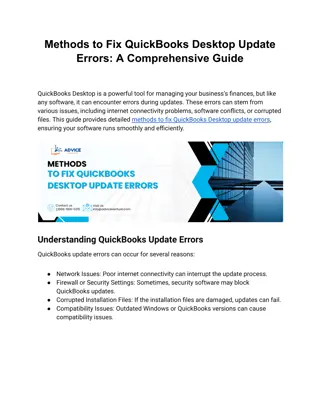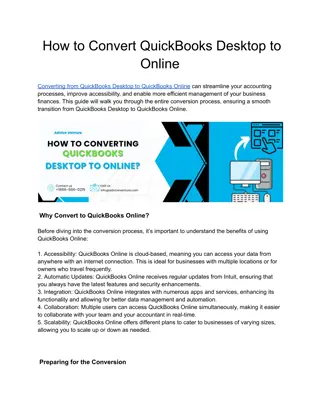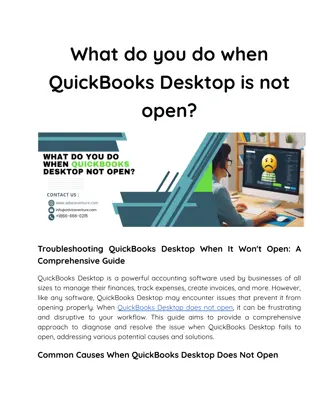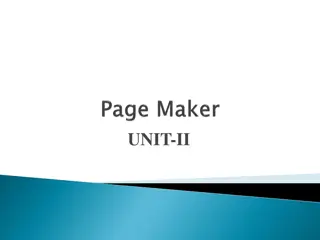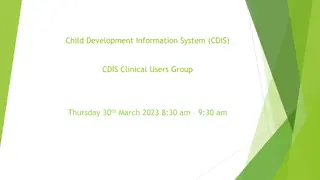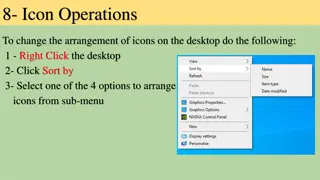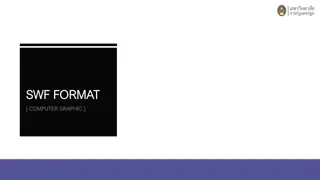Introduction to Adobe PageMaker: Desktop Publishing and Design
Adobe PageMaker, the pioneering desktop publishing software, revolutionized document creation on the Apple Macintosh in 1985. From Aldus to Adobe, various versions enhanced features and usability, allowing users to create professional business documents with ease. Explore the evolution, features, and tools of Adobe PageMaker for efficient desktop publishing.
Download Presentation

Please find below an Image/Link to download the presentation.
The content on the website is provided AS IS for your information and personal use only. It may not be sold, licensed, or shared on other websites without obtaining consent from the author.If you encounter any issues during the download, it is possible that the publisher has removed the file from their server.
You are allowed to download the files provided on this website for personal or commercial use, subject to the condition that they are used lawfully. All files are the property of their respective owners.
The content on the website is provided AS IS for your information and personal use only. It may not be sold, licensed, or shared on other websites without obtaining consent from the author.
E N D
Presentation Transcript
DESKTOP PUBLISHING AND DESIGNING INTRODUCTION TO PAGEMAKER
ADOBE PAGEMAKER Adobe PageMaker is the first desktop computer program introduced by Aldus on the Apple Macintosh in 1985. Later it was accepted by Adobe Corporation, after which several versions of it were released in the market. Adobe PageMaker is a software program used to create brochures, flyers, newsletters, reports, and many other business-quality documents that are used for business or educational purposes. The program makes it easy for users to format documents, adjust their layout, and change various design details, such as graphics and fonts, before printing and delivering the document.
VERSIONS OF PAGEMAKER Aldous Pagemaker 1.0 was released for Macintosh in July 1985 and IBM PC in December 1986. Aldous Pagemaker 1.2 for Macintosh was released in 1986. Aldous PageMaker 4.0 for Macintosh was released in 1990 and offered word processing capabilities, extended typographic controls, and advanced features to handle longer documents. Aldous Pagemaker 5.0 was released in January 1993. Adobe PageMaker 6.0 was released in 1995, a year after Aldus Systems acquired Aldus Corporation. Adobe Pagemaker 6.5 was released in 1996. Aldous Pagemaker 2.0 was released in 1987. As of May 1987, the initial Windows release was bundled with a full version of Windows 1.0.3; This version also supported MS Dose. Aldous Pagemaker 3.0 was shipped to Macintosh in April 1988. Adobe PageMaker 7.0 was released on 9 July 2001, although updates have been released for two supported platforms. Macintosh versions run only on Mac OS 9 or earlier, there is no native support for Mac OSX.
FEATURES OF PAGEMAKER Templates have been added to it. By which the design of different types of pages is already determined. And we can use them to speed up our work. The toolbar was added for the first time in this edition. Through which the working speed is increased. With the help of this toolbar, you can print, save, format, and spell-check the file with a single click. Color management has also been used in this. By this, we can decide the colors in the document according to our choice. Using clip art, we can easily use pictures and icons in publishing. Through modern and advanced printing technology, we can easily do printing on both sides, duplex printing, binding printing, etc. Photos can be used directly by using Photoshop.
ADOBE PAGEMAKER SCREEN Toolbox This is a box of tools used while working in PageMaker, here you get 14 types of tools to create a publication. The file that is created in PageMaker is called Publication. We can move it anywhere at our convenience. When a new publication is created in PageMaker or a previously created publication is opened, only the Icons that are in the toolbox are visible. If the toolbox is not visible for any reason, we can edit the text and graphics of the publication in PageMaker by opening the window menu and clicking Show Tools.
ADOBE PAGEMAKER SCREEN Standard Toolbar Below the PageMaker's menu bar is the standard toolbar. The commands used in it are given as icons such as new, open, save, print, find, etc. Which you can use while working in the publication. Ruler guides Ruler guides are used to specify the length and width of a page. It can also be moved if needed. The ruler guides are on the left and top of the publication.
ADOBE PAGEMAKER SCREEN Control palette In this, options like font, font size, bold, italic, underline, line spacing, etc. are given. Which are used in doing any kind of editing while working on the publication. Page border With this, we can select the border of the page. How many borders do we have to keep? If we have typed something and it goes out of the page border, it does not print when we remove it. Margin guides This option is used to determine the place of typing inside a page. It appears as a thin blue line on the page.




